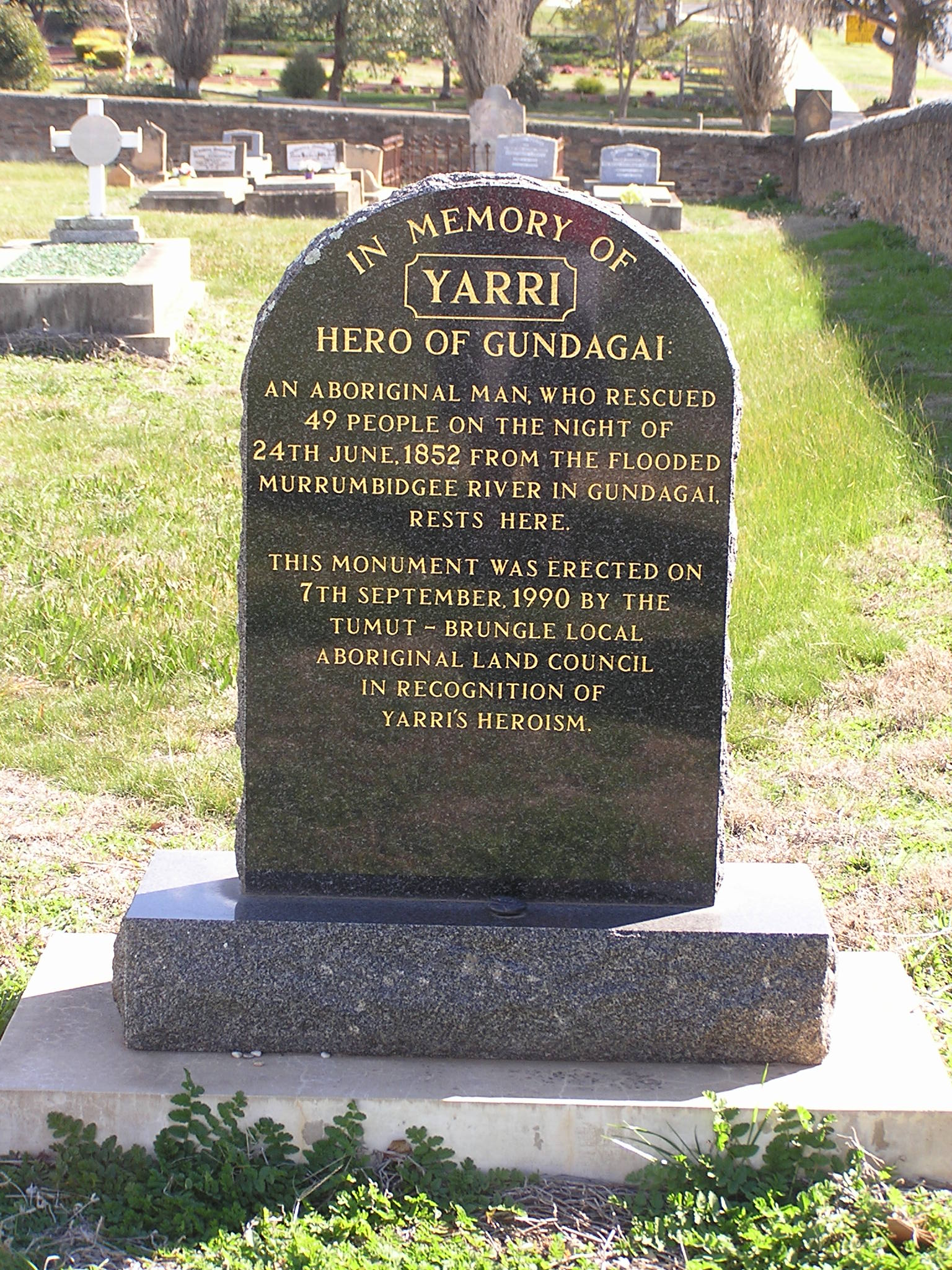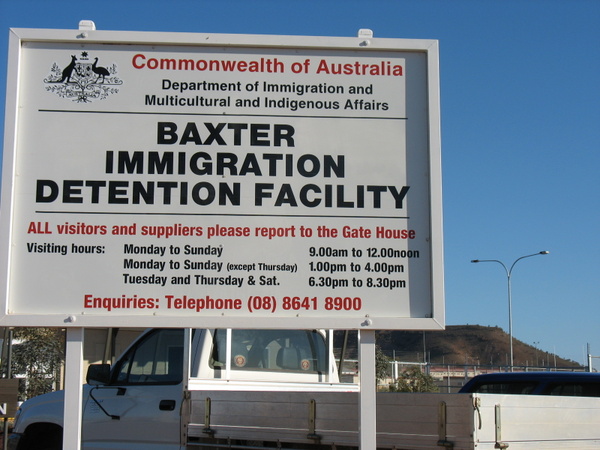|
John Baxter (explorer)
John Baxter (179929 April 1841) was an Irish convict who became an Australian pioneer, overlander, explorer, and offsider of explorer Edward John Eyre. Origins Baxter was born in 1799 at Comber, County Down, Ireland, a son of mariner James Baxter. Raised in a Protestant family, the powerfully built young man, who was educated to read and write, became a farm bailiff at Down. He was convicted for having received a stolen brooch in July 1826, and was sentenced to seven years' penal transportation, to be served in New South Wales. He arrived in Sydney aboard the . N.S.W. convict He was promptly assigned as a farm labourer for free settlers, initially for William Bell in the Hunter Valley, and then other settlers. Through good conduct he obtained his ticket of leave in 1831 while working at Patrick's Plains on the Hunter River. On 19 August 1833 he was granted his Certificate of Freedom. That same month the 33-year-old ruddy-faced Baxter was one of six freed ex-convicts assigned ... [...More Info...] [...Related Items...] OR: [Wikipedia] [Google] [Baidu] |
Comber, County Down
Comber ( , , locally ) is a town in County Down, Northern Ireland. It lies south of Newtownards, at the northern end of Strangford Lough. It is situated in the townland of Town Parks, the civil parish of Comber and the historic barony of Castlereagh Lower. Comber is part of the Ards and North Down Borough. It is also known for Comber Whiskey which was last distilled in 1953. A notable native was Thomas Andrews, the designer of the RMS Titanic and was among the many who went down with her. Comber had a population of 9,071 people in the 2011 Census. History The confluence of two rivers, which gave the town its name, is that of the Glen River and the Enler River which meet here. During the influx of Scots in the early 1600s (see Plantation of Ulster), a settlement grew up at Comber, although it was focused about further south than at present, in the townland of Cattogs, and there is evidence that the settlement was a port used by traders and fishermen. By the 1700s, howev ... [...More Info...] [...Related Items...] OR: [Wikipedia] [Google] [Baidu] |
Overlanding
Overlanding is self-reliant overland travel to remote destinations where the journey is the principal goal. Typically, but not exclusively, it is accomplished with mechanized off-road capable transport (from bicycles to trucks) where the principal form of lodging is camping, often lasting for extended lengths of time (months to years) and spanning international boundaries. History Historically, "overlanding" is an Australian term to denote the droving of livestock over very long distances to open up new country or to take livestock to market far from grazing grounds. Between 1906 and 1910 Alfred Canning opened up the Canning Stock Route. In Australia overlanding was inspired to a large degree by Len Beadell who, in the 1940s and 1950s, constructed many of the roads that opened up the Australian Outback to colonizers. Those roads are still used today by Australian overlanders and still hold the names Len gave them; the Gunbarrel Highway, the Connie Sue Highway (named after his da ... [...More Info...] [...Related Items...] OR: [Wikipedia] [Google] [Baidu] |
Swag (bedroll)
In Australia, a swag is a portable sleeping unit. It is normally a bundle of belongings rolled in a traditional fashion to be carried by a foot traveller in the bush. Before motor transport was common, foot travel over long distances was essential to agriculture in the Australian bush. It is sometimes referred to as a "backpack bed". Swags have been carried by shearers, miners, the unemployed, and many others, some of whom would have been happy to have been called swagmen and some not. History In the early 1800s, the term ''swag'' was used by British thieves to describe any amount of stolen goods. One definition given in Francis Grose's 1811 ''Dictionary of the Vulgar Tongue'' is "any booty you have lately obtained,.... To carry the swag is to be the bearer of the stolen goods to a place of safety." James Hardy Vaux, a convict in Australia, used the term for similar purposes in his memoirs written in 1812 and published in 1819. By the 1830s, the term in Australia had transferred ... [...More Info...] [...Related Items...] OR: [Wikipedia] [Google] [Baidu] |
Wylie (person)
Wylie (c. 1825 – ?) was an Indigenous Australians, indigenous Australian originally from the King George Sound tribe around Albany, Western Australia, Albany in Western Australia. He accompanied Edward John Eyre to Adelaide by sea in May 1840, and would have left with Eyre on his expedition to penetrate to the interior in June of the same year, but Wylie was ill. Later in the year, Eyre was at Fowlers Bay, South Australia, Fowlers Bay in the west, having retreated from the north, and Wylie joined him by way of the ship supplying the expedition, the ''Hero''. Wylie was subsequently one of the three aborigines to accompany Eyre and John Baxter (explorer), John Baxter on their final attempt to cross the Nullarbor Plain in 1841. He deserted for a brief time with the other older aboriginal member of the party, Joey, while the party rested at the sandhills of present-day Eucla, Western Australia, Eucla, but they returned when they failed to find any food. Several weeks later he prov ... [...More Info...] [...Related Items...] OR: [Wikipedia] [Google] [Baidu] |
Indigenous Australians
Indigenous Australians or Australian First Nations are people with familial heritage from, and membership in, the ethnic groups that lived in Australia before British colonisation. They consist of two distinct groups: the Aboriginal peoples of the Australian mainland and Tasmania, and the Torres Strait Islander peoples from the seas between Queensland and Papua New Guinea. The term Aboriginal and Torres Strait Islander peoples or the person's specific cultural group, is often preferred, though the terms First Nations of Australia, First Peoples of Australia and First Australians are also increasingly common; 812,728 people self-identified as being of Aboriginal and/or Torres Strait Islander origin in the 2021 Australian Census, representing 3.2% of the total population of Australia. Of these indigenous Australians, 91.4% identified as Aboriginal; 4.2% identified as Torres Strait Islander; while 4.4% identified with both groups. [...More Info...] [...Related Items...] OR: [Wikipedia] [Google] [Baidu] |
Yarri (Wiradjuri)
Yarri (c. 1810 – 24 July 1880) also spelled "Yarrie", "Yarry" or "Yarra" was an Australian Aboriginal man of the Wiradjuri language group who took a major part in the rescue of 69 people from the flooded Murrumbidgee River in Gundagai over three days, from the night of 25 June to 27 June 1852. Background Yarri came from Brungle in the Gundagai Police District, His native name of Coonong Denamundinna indicates he was of the Rainbow serpent pastoral property near Tumblong, Adelong N.S.W. which was also associated with the Coonong region downstream of Wagga Wagga in New South Wales. Yarri worked at Nangus station as a shepherd. The aboriginals of the area were numerous: according to an 1851 estimate, which classified them generically as belonging to the Tumut tribe, they consisted of 35 groups. Life Yarri is said to have previously saved the life of John Hargreaves at the time of the 1844 flooding in the area. His act earned him the friendship of the family and he lived on thei ... [...More Info...] [...Related Items...] OR: [Wikipedia] [Google] [Baidu] |
Nullarbor Plain
The Nullarbor Plain ( ; Latin: feminine of , 'no', and , 'tree') is part of the area of flat, almost treeless, arid or semi-arid country of southern Australia, located on the Great Australian Bight coast with the Great Victoria Desert to its north. It is the world's largest single exposure of limestone bedrock, and occupies an area of about . At its widest point, it stretches about from east to west across the border between South Australia and Western Australia. History Historically, the Nullarbor was seasonally occupied by Indigenous Australian people, the Mirning clans and Yinyila people. Traditionally, the area was called ''Oondiri'', which is said to mean "the waterless". The first Europeans known to have sighted and mapped the Nullarbor coast were Captain François Thijssen and Councillor of the Indies, Pieter Nuyts, on the Dutch East Indiaman '''t Gulden Zeepaert'' (the Golden Seahorse). In 1626–1627, they charted a stretch of the southern Australian coast eas ... [...More Info...] [...Related Items...] OR: [Wikipedia] [Google] [Baidu] |
Baxter Detention Centre
Baxter Immigration Reception and Processing Centre or commonly just Baxter Detention Centre, was an Australian immigration detention facility near the town of Port Augusta in South Australia. It was the focus of much of the controversy concerning the mandatory detention of asylum seekers in Australia. History Baxter Detention Centre was named after the nearby Baxter Range, a geographical feature which in turn is named after the explorer John Baxter who, ironically, arrived in Australia as a convict. It was located on a portion of the Australian Defence Force's El Alamein Army Reserve that was nearest to Port Augusta. Following establishment expenditure of $44 million, Baxter Detention Centre became operational in September 2002. After it closed in August 2007, some of the buildings were removed and the land returned to the Department of Defence. In May 2008, a public auction was held for the surplus material remaining in the complex. Facility The centre was built by Fleet ... [...More Info...] [...Related Items...] OR: [Wikipedia] [Google] [Baidu] |
Port Augusta, South Australia
Port Augusta is a small city in South Australia. Formerly a seaport, it is now a road traffic and railway junction city mainly located on the east coast of the Spencer Gulf immediately south of the gulf's head and about north of the state capital, Adelaide. The suburb of Port Augusta West is located on the west side of the gulf on the Eyre Peninsula. Other major industries included, up until the mid-2010s, electricity generation. At June 2018, the estimated urban population was 13,799, Estimated resident population, 30 June 2018. having declined at an average annual rate of -0.53% over the preceding five years. Description The city consists of an urban area extending along the Augusta and Eyre Highways from the coastal plain on the west side of the Flinders Ranges in the east across Spencer Gulf to Eyre Peninsula in the west. The urban area consists of the suburbs, from east to west, of Port Augusta and Davenport (on the eastern side of Spencer Gulf), and Port Augusta We ... [...More Info...] [...Related Items...] OR: [Wikipedia] [Google] [Baidu] |
Eyre Peninsula
The Eyre Peninsula is a triangular peninsula in South Australia. It is bounded by the Spencer Gulf on the east, the Great Australian Bight on the west, and the Gawler Ranges to the north. Originally called Eyre’s Peninsula, it was named after explorer Edward John Eyre, who explored parts of the peninsula in 1839–41. The coastline was first charted by the expeditions of Matthew Flinders in 1801–02 and French explorer Nicolas Baudin around the same time. Flinders also named the nearby Yorke’s Peninsula and Spencer’s Gulph on the same voyage. The peninsula's economy is primarily agricultural, with growing aquaculture, mining, and tourism sectors. The main towns are Port Lincoln in the south, Whyalla and Port Augusta in the northeast, and Ceduna in the northwest. Port Lincoln (''Galinyala'' in Barngarla), Whyalla and Port Augusta (''Goordnada'') are part of the Barngarla Aboriginal country. Ceduna is within the Wirangu country. Naming and extent The peninsula was n ... [...More Info...] [...Related Items...] OR: [Wikipedia] [Google] [Baidu] |
Aboriginal Australians
Aboriginal Australians are the various Indigenous peoples of the Australian mainland and many of its islands, such as Tasmania, Fraser Island, Hinchinbrook Island, the Tiwi Islands, and Groote Eylandt, but excluding the Torres Strait Islands. The term Indigenous Australians refers to Aboriginal Australians and Torres Strait Islanders collectively. It is generally used when both groups are included in the topic being addressed. Torres Strait Islanders are ethnically and culturally distinct, despite extensive cultural exchange with some of the Aboriginal groups. The Torres Strait Islands are mostly part of Queensland but have a separate governmental status. Aboriginal Australians comprise many distinct peoples who have developed across Australia for over 50,000 years. These peoples have a broadly shared, though complex, genetic history, but only in the last 200 years have they been defined and started to self-identify as a single group. Australian Aboriginal identity has cha ... [...More Info...] [...Related Items...] OR: [Wikipedia] [Google] [Baidu] |







